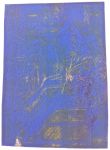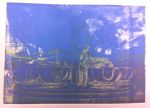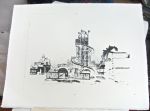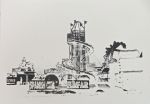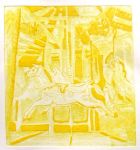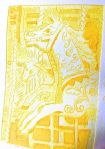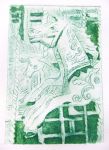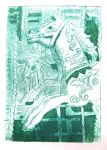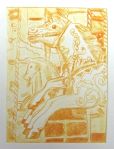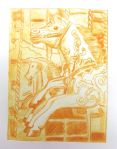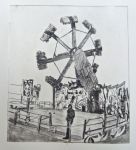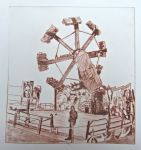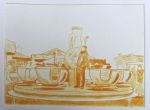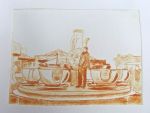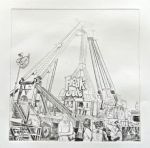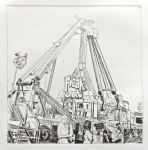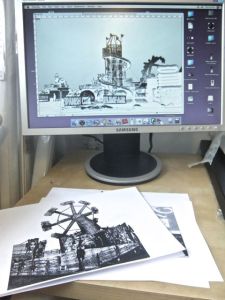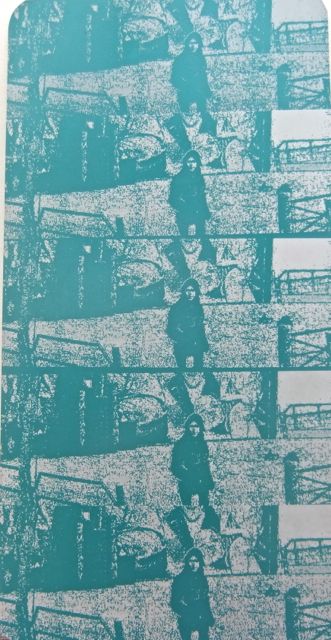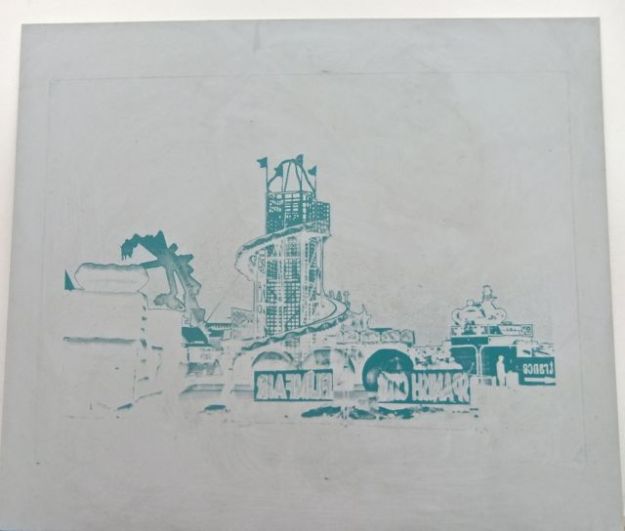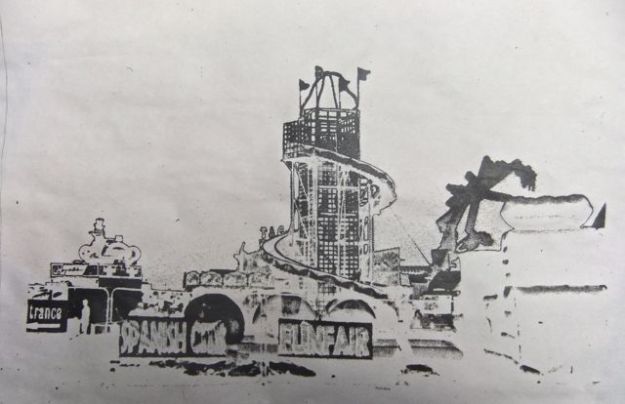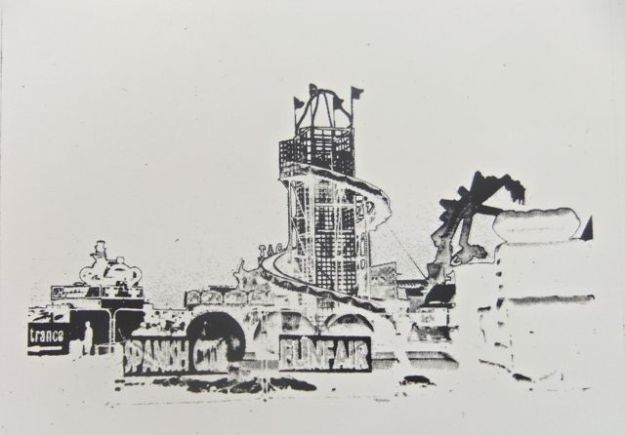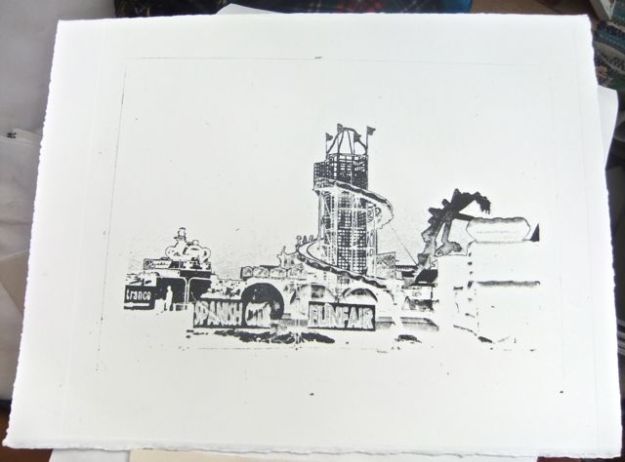It was just one of those days. I had not found time to prepare for my day in the studio as I had intended, let alone to make a new plate specifically created with viscosity printing in mind. Finding I’d forgotten to take a couple of important things with me threw me a bit at the beginning of the day.
I found it hard to decide which plates to print, and even harder to decide which colour inks to use. Viscosity printing uses a combination of inks in different thicknesses, and I needed to think through what colours I could mix from the tubes, their tonal values, and how they would work in different layers.
I decided to try the teacups ride not using the full three layers of viscosity prints, and the small carousel plates using all three layers. I started with primrose yellow as the etching ink in the grooved parts of the plate. Ultramarine blue mixed with titanium white was the thinner, oilier layer and crimson mixed with a little yellow + magesium carbonate was the thicker layer on top. I was aware that this combination might not work, but needed to try it and did think it would work better than it did.
- Plastic small carousel plate.
- First print off the plastic small carousel plate.
- Ghost print off the plastic small carousel plate.
- Card small carousel plate.
- First print from the card small carousel plate.
- Ghost print from the card small carousel plate.
It did occur to me that I can print on top of these another day.
I put the plates through with just a layer of blue ink rolled on, to see how much they were functioning as relief plates because there probably isn’t that much depth to a drypoint plate.
- Testing how much depth there was on the drypoint plate by using it as a relief plate.
At this point I was almost ready to give up. It was hot in the studio, I desperately needed a mug of tea, but didn’t want to stop but I did decide to give up on the viscosity printing and to try adding some colour to the drypoint by hand.
I was disappointed with my day’s prints because they hadn’t worked well, but it is part of the learning process, and I had to try doing things that I was unsure would work. I’m back in the studio after the long Easter weekend, and hope to get a new plate made before then.










